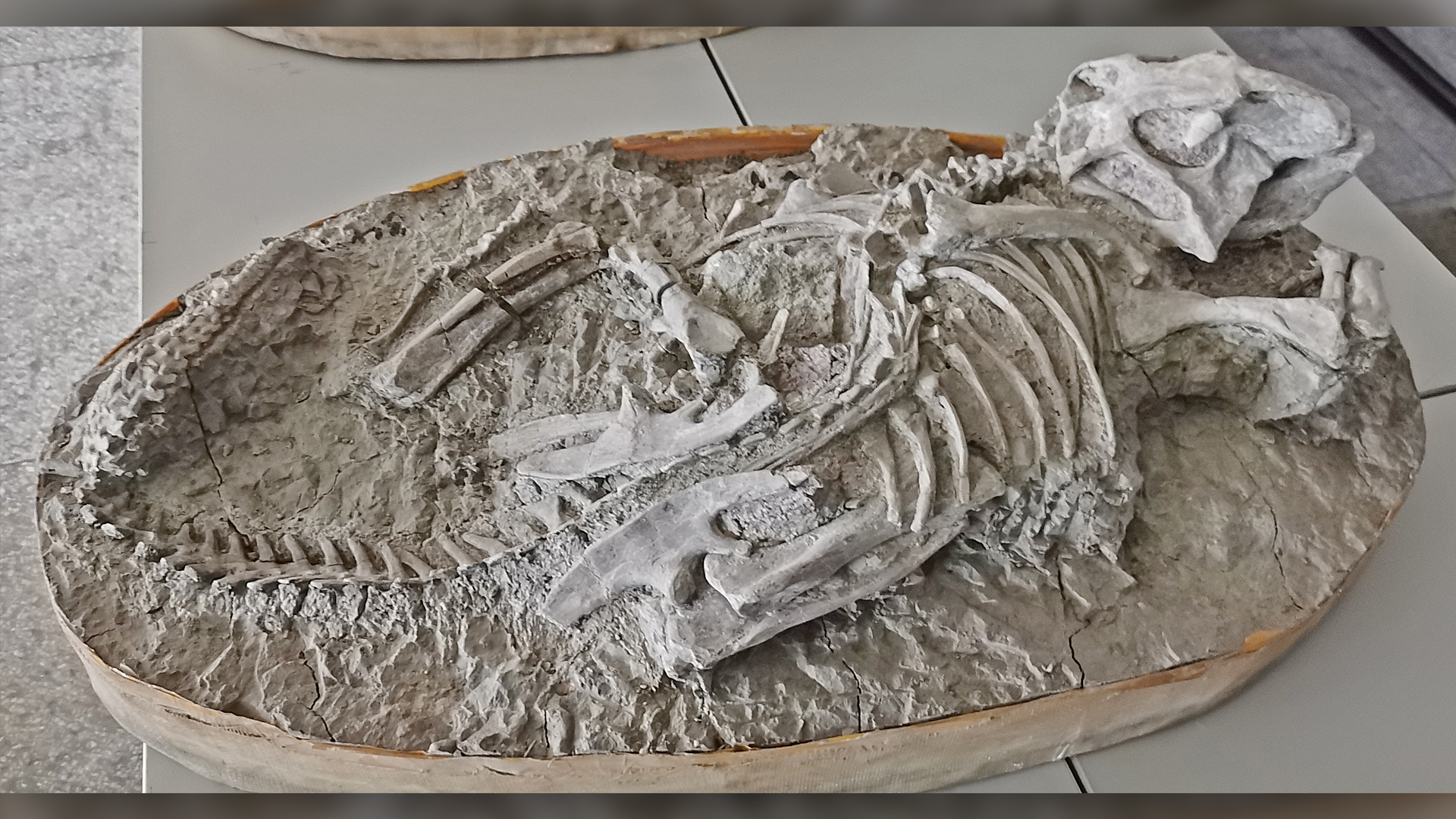Stunningly preserved ‘Cretaceous Pompeii’ fossils may not be what they seem
Fossils of the two beaked dinosaurs were discovered in China.

Did a "Cretaceous Pompeii" doom a pair of dinosaurs, burying them in a deadly ash flow and preserving them in 3D like the human victims of Mount Vesuvius in A.D. 79?
Not quite, scientists revealed at the annual meeting of the American Geophysical Union (AGU).
The 3D preservation of two psittacosaurs — beaked dinosaurs with heads that resembled those of modern parrots, earning them the name "parrot lizards" — likely happened because the dinosaurs were huddled inside a burrow that filled with mud, fully covering the animals before they fossilized. Researchers presented their findings on Dec. 14 at AGU, which was held virtually this year due to the COVID-19 pandemic.
Related: Preserved Pompeii: Photos of a city in ash
Paleontologists examined two Psittacosaurus lujiatunensis skeletons that came from northeast China's Yixian Formation in Liaoning Province. The Lujiatun outcropping within that formation is known for its rich deposits of Cretaceous fossils, many of which are preserved in 3D and even retain soft tissue, feathers or coloration, the scientists said at AGU.
Past studies proposed that the psittacosaurs and other 3D fossils at the site had been engulfed by either a pyroclastic flow (a dense and fast-moving river of ash, lava and volcanic gases) or a lahar, which is another type of powerful volcanic debris flow that adds mud to the deadly mix. Those flows rapidly encase any living thing in their path, which is exactly what happened at Pompeii, where an estimated 2,000 people perished and were frozen in time, their bodies preserved in gruesomely lifelike poses as layers of ash hardened around them.

Ancient grains
For the research presented at AGU, the authors sampled two locations in each P. lujiatunensis fossil: They extracted sediment grains from both the rocky matrix surrounding the skeleton and the matrix within the skeleton, and analyzed a type of mineral known as a zircon to determine how old those grains were. They found that many particles in the matrix outside the skeletons were very old, dating from 250 million to 2.5 billion years ago. However, the rocks in the Lujiatun deposits were much younger, only about 125 million years old.
Sign up for the Live Science daily newsletter now
Get the world’s most fascinating discoveries delivered straight to your inbox.
The proportion of older grains was much higher than it would have been if the dinosaurs had been buried by the same pyroclastic flow or lahar that created the surrounding rocks, suggesting that earlier hypotheses of how the dinosaurs died "are implausible," lead researcher Elaine Chen, an undergraduate student at Columbia University in New York City, told Live Science in an email. Chen conducted her research during an internship at Lamont-Doherty Earth Observatory in Columbia's Earth Institute.
However, flowing rivers would be more likely to carry a range of older sediments. And if the dinosaurs were in a burrow that suddenly collapsed around them after flooding, that would have preserved the articulated skeletons in exquisite 3D, Chen said.
In September, another team of scientists described a new dinosaur species that they named Changmiania liaoningensis, or "eternal sleeper from Liaoning," that was also identified as a burrowing dinosaur. It was so named because the two individuals of that species found were preserved in 3D in what appeared to be sleeping poses, likely because they peacefully dozed off in an underground den just before they died, Live Science previously reported.
If the two psittacosaurs were also burrow-dwellers — which they were not previously thought to be — that could offer scientists intriguing new clues about the dinosaurs' behavior and social habits. But as these findings are preliminary, more research will be necessary to test this hypothesis, Chen said in the email.
Originally published on Live Science.

Mindy Weisberger is an editor at Scholastic and a former Live Science channel editor and senior writer. She has reported on general science, covering climate change, paleontology, biology and space. Mindy studied film at Columbia University; prior to Live Science she produced, wrote and directed media for the American Museum of Natural History in New York City. Her videos about dinosaurs, astrophysics, biodiversity and evolution appear in museums and science centers worldwide, earning awards such as the CINE Golden Eagle and the Communicator Award of Excellence. Her writing has also appeared in Scientific American, The Washington Post and How It Works Magazine. Her book "Rise of the Zombie Bugs: The Surprising Science of Parasitic Mind Control" will be published in spring 2025 by Johns Hopkins University Press.









